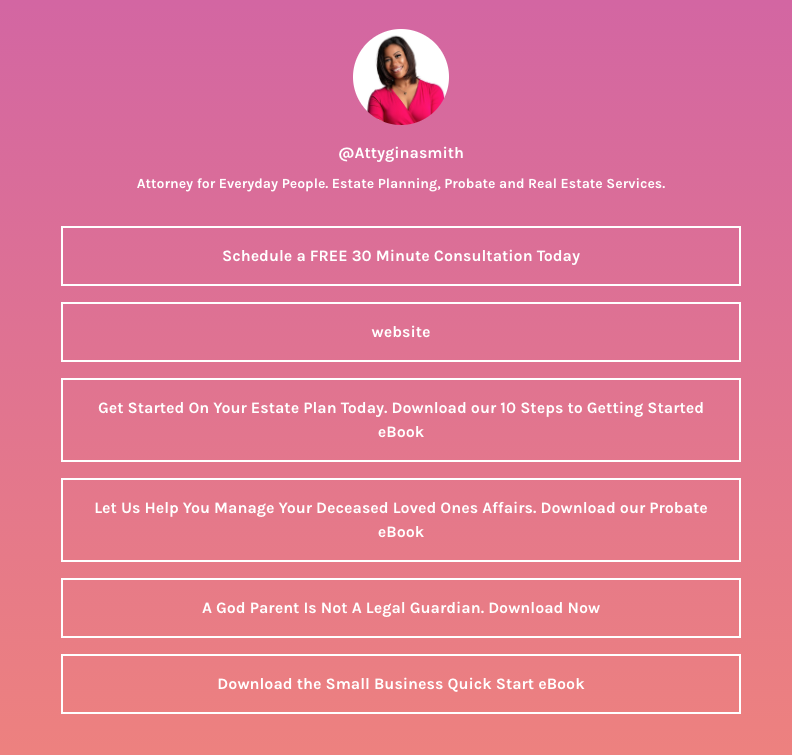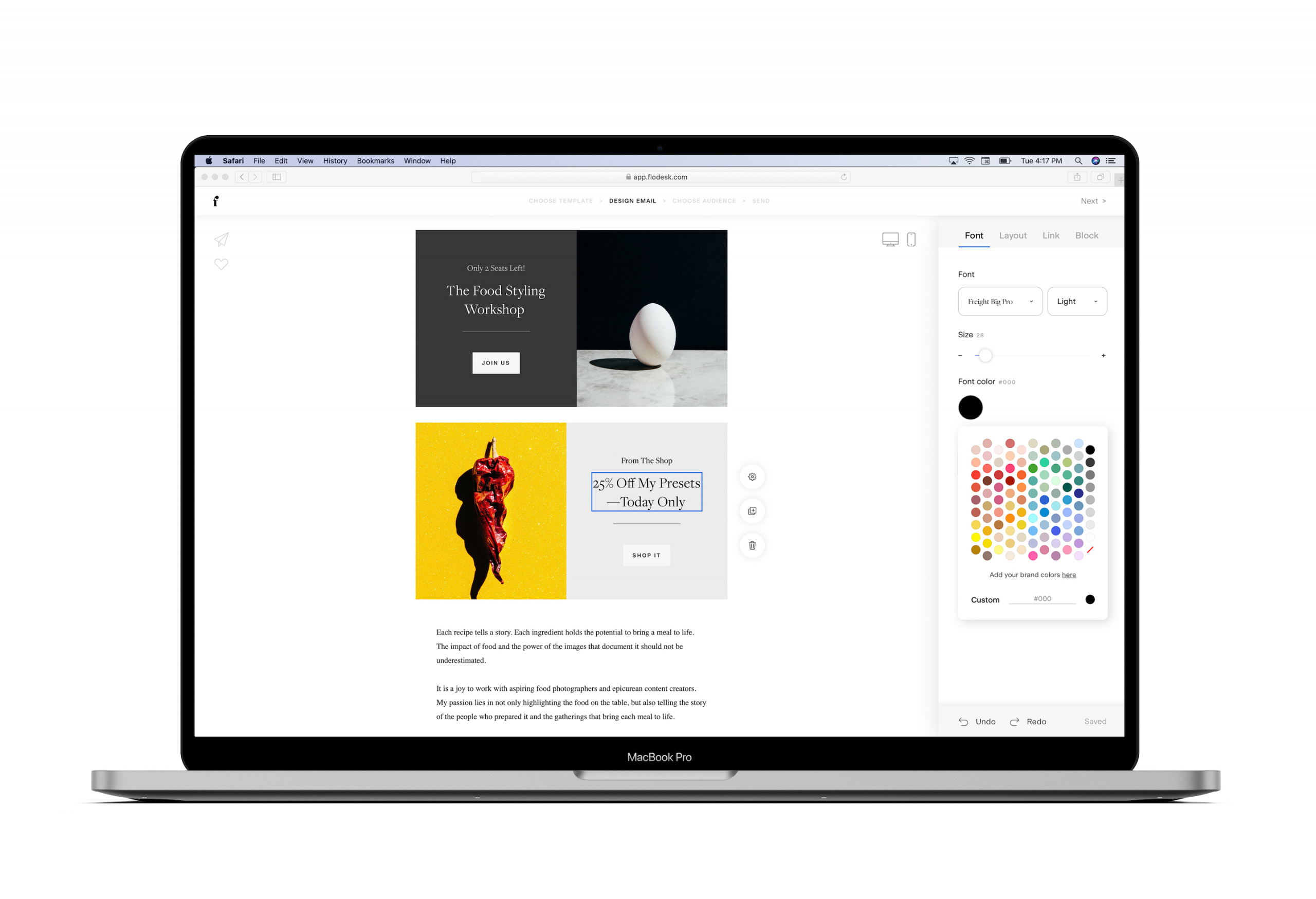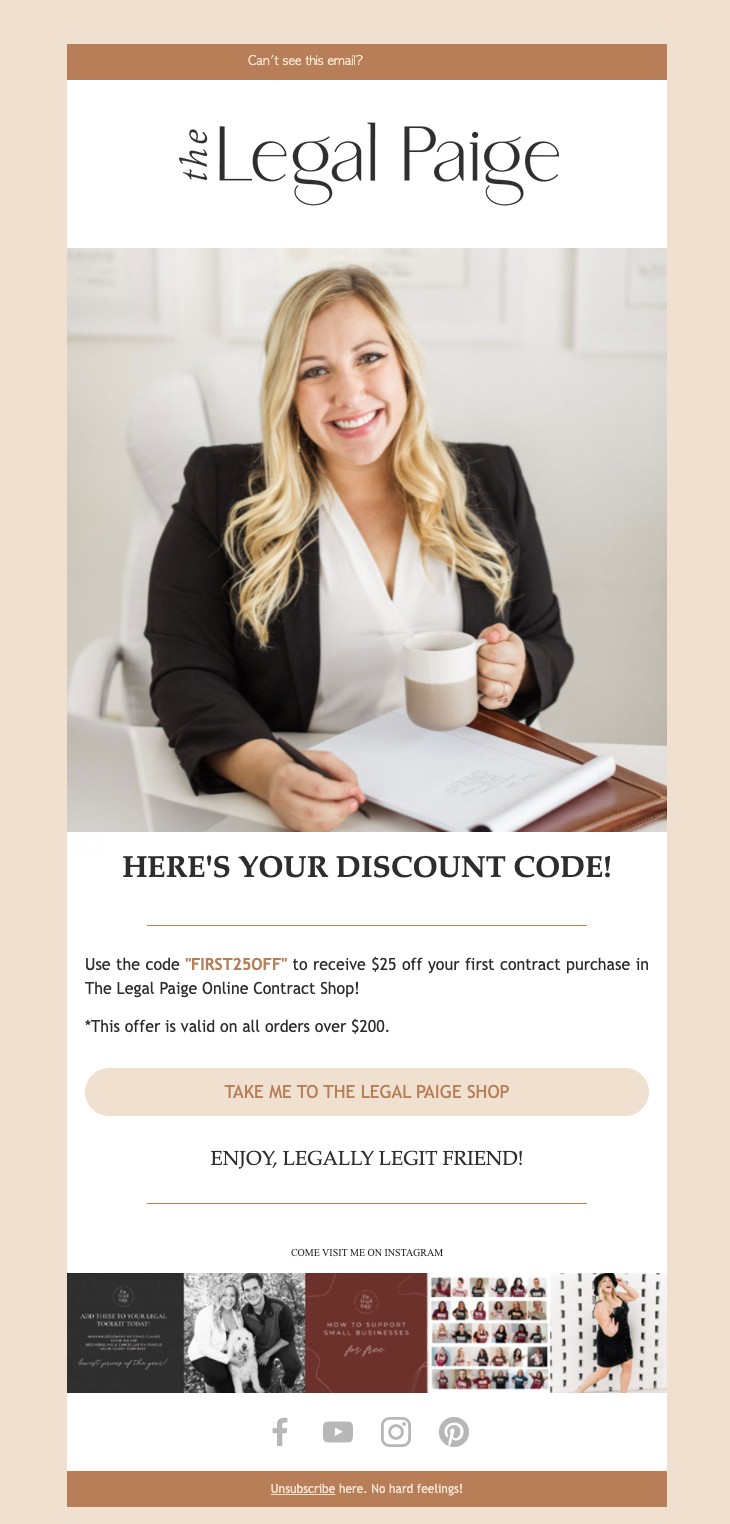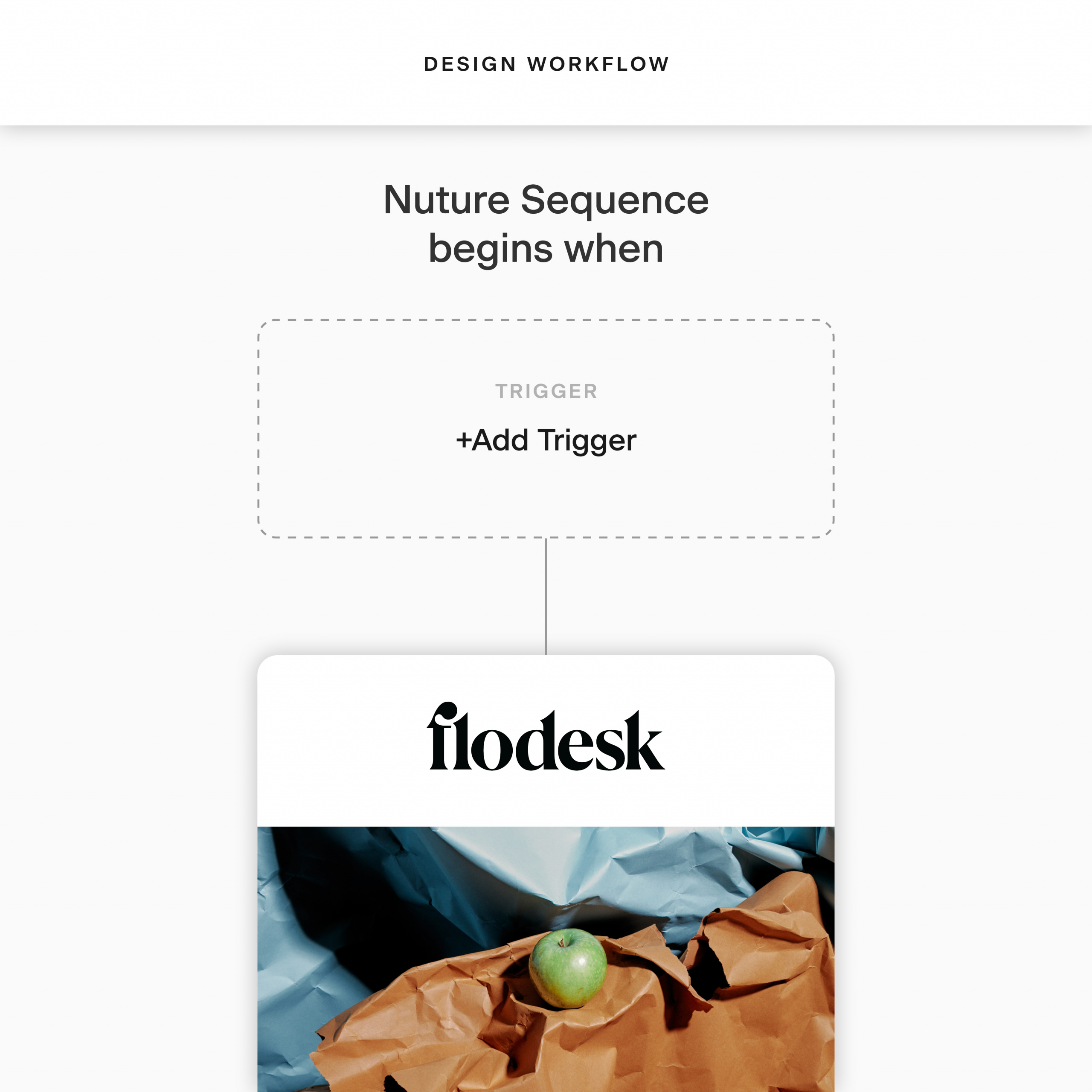The Complete Guide to Email Marketing for Lawyers
Table of Contents Jump to:
Jump to:
Table of contents
The biggest challenge facing solo attorneys or small legal firms today probably won’t surprise you. Research consistently finds that attracting a steady stream of new clients is the number one difficulty lawyers and law firms face.
People often go years without requiring legal support, and companies advertising services like “online will creation” create more competition for lawyers. This means lawyers have to work harder than ever to remain profitable. So, what strategies can lawyers put in place to overcome this challenge?
Email marketing is one of the best ways to help attract new legal clients; gain referrals; and keep your legal firm in front of potential clients, ready and waiting for when they need you in the future.
In this article, we explore why an email marketing strategy is so crucial for law firms and lawyers, share five email marketing approaches you should implement and offer a step-by-step guide to getting started.
Get unlimited email sends & subscribers with Flodesk
We’ll never increase pricing because your email list is growing
Why should lawyers & law firms use email marketing?
As a legal firm considering getting started with email marketing, you might need a little convincing. So here are three key reasons law firms and lawyers like you should use email marketing.
1. It’s cost-effective
Email marketing doesn’t require a significant investment upfront. A good email marketing platform makes it simple to create, design and send emails, and they’re relatively inexpensive for the value they provide.
So all you need to do is carve out a bit of time every week or month to develop engaging content for your emails. And the investment is worth it. 65% of marketers perceived their email marketing ROI to be good or excellent.
2. It shows off your expertise
Legal services and jargon can feel intimidating. Your email newsletter is a way to explain your services in an accessible, easy-to-understand way. When you break down legal jargon and concepts in simple terms, your audience will see your expertise and know you have what it takes to help them with their law-related issues.
3. It increases your competitive advantage when combined with free consults
One of the strategies you can use to engage prospective clients is a free consultation. You can use a free consultation to discuss legal matters potential clients are facing and explain how you’d approach it if they engage you.
Offering free consults lets you collect the email addresses of potential clients when they apply for it. That’s a fantastic opportunity to grow your email list. It’s also a great way to build trust with potential clients, which means they’re more likely to choose you for help in the future. Just be sure you ask them to opt into your email list, consenting to receive your marketing emails, while they’re signing up for the free consultation.
In your first follow-up email, you can seek feedback from them about how they found the consultation, whether they’d like to move forward with hiring you, and whether there’s anything you could have done to improve their experience. Asking for and acting on their feedback shows you value them as a potential client, strengthening the relationship and encouraging them to retain your counsel.
5 email marketing strategies for law practitioners
By now, hopefully you understand how important email marketing is for you and your firm’s success. But scouring the web for how to do it only offers generic advice. How can you take everything that’s out there and make it work as a legal practitioner? Don’t worry, we’ve got five vital strategies to help you grow your email list and get the most from your email marketing.
First of all, use your emails to create valuable and relevant content for your subscribers. Consider what you know about them and reflect on the topics that are most important to them. Personalizing your email content to make sure it meets the needs of your audience can result in a 29% increase in open rate, which is crucial for engagement and building effective subscriber relationships.
Here are a few ideas to find law-related topics that are important to your subscribers:
- Think of the most common issues/topics your clients and subscribers complain or talk about.
- Search the web for information on industry trends.
- Check out what your competition is doing—sign up for their email mailing lists or read their blog.
- Finally, if you already have an email list, ask your existing subscribers themselves. A quick email with a list of potential topics they can choose from or an open-ended question so they can provide their own suggestions is a great way to learn what your subscribers need.
2. Provide free guides on topics that are important to potential clients
Offering a free guide, worksheet or ebook to potential clients in return for their email address is a classic marketing tactic. It’s a smart one, too, as it means that subscribers immediately get something tangible and valuable in return for providing their contact details. Make sure the topic of your free guide is relevant and likely to solve one of their pain points.
For example, attorney Gina Smith offers free guides to “10 steps to getting started with your estate planning,” a probate ebook and a “Small Business Quick Start” ebook in her Instagram’s link in bio. These provide the incentives needed for Instagram visitors to part with their email address.
To learn more about how to market your freebie effectively, read The Exact Steps to Create a Lead-Generating Freebie Download.
3. Offer free consultations
Like offering free guides, promoting a free consultation opportunity can be a great way to collect email addresses while providing something of value to a prospective client.
You can advertise a free consultation on your website, social media channels or through existing clients. For example, say you provided contract negotiation and preparation for a local construction firm. You can ask that client to promote your free consultation to other businesses within their network as a way to grow your email list. 69% of customers who’ve had a positive experience with a service are happy to refer companies to their contact list.
4. Create blog posts with sign-up forms in them
Well-written, educational blog posts that create value for website visitors can be a useful tool to grow your email list. They’re a way to share information, increase your online visibility and help your audience connect with your law firm. So it’s not a surprise that 92% of marketers use blogs as part of their content marketing strategy.
If you’re addressing the right topics, i.e., topics your potential clients care about, embedding a sign-up form within your blog content or adding one as a sidebar or pop-up helps to encourage potential customers to join your email list.
If they find your blog posts valuable, they’ll sign up for your email list to make sure they receive your future content. To learn more about using your website to grow your email list, read 5 High-Converting Places on Your Website to Add Your Opt-in Email Form.
Once you start growing your email list, provide your subscribers with valuable, relevant information that keeps them engaged with your law firm until they’re ready to commit to using your services.
Use the research you did previously to identify a list of topics that are likely to appeal to your audience and start creating and scheduling content. Putting time and effort into nurturing your subscribers is vital to creating the personal and trusting relationship needed to make you their top choice for legal services in the future.
Research has shown that companies that nurture their subscribers through email generate 50% more sales than those that target non-nurtured leads.
A step-by-step guide to getting started with law firm email marketing
What’s the best way to get started with email marketing? Follow our seven steps below to get started with email marketing today.
1. Choose a great email marketing tool
Getting started with email marketing doesn’t have to be complicated, but there are several things you’ll need to think about, including the design and content of your emails; how to best schedule them; and how to analyze your email campaigns’ success.
This is where your email marketing tool comes in. A professional email marketing service (or tool) helps you do all those things in a single platform, saving you time and effort that could be better spent on billable work.
Get unlimited email sends & subscribers with Flodesk
We’ll never increase pricing because your email list is growing
Key features in a great email marketing platform
So, if you’re going to use an email marketing platform, what are the essential features to look out for? Well, the best email marketing tool is one that performs the functions you need for your law firm, but these four features are a good place to start.
- Visually appealing design: You need a platform that allows you to create beautiful emails that will catch the eye of your email recipients. If you’re just getting started with email marketing, you need a provider that offers a gallery of email templates and an email builder with drag-and-drop functionality. As you gain experience, you might also need a platform with the flexibility to also build personalized emails from scratch. Flodesk includes everything you need to get started quickly and is perfect for beginners and experts alike.
- Email automation: Time is money, and a platform that allows you to be hands-off with scheduling your emails will likely be more profitable than one where you have to keep on top of 24/7. Automation can also improve personalization by sending emails to your list based on subscriber behaviors.
- Responsiveness: 60% of Americans check their email on the go, which means your emails need to be readable on whatever device your subscribers are using. Look for platforms like Flodesk that build emails where the design and content adapt across screens of different sizes so subscribers can read your emails wherever and whenever without impacting their experience.
2. Use effective channels to build your email list
You can use several different channels to build your email list, including your website, other people’s websites, social media and in-person sign-up opportunities. Let’s take a look at a few of these channels in more detail so you can start building your email list.
- New client paperwork: As clients engage you, they’re likely to provide their email addresses as part of their contact details. While technically, you can add them to your email marketing list straight away, you’ll build a more trusting relationship if you seek their permission to send them information. A simple check box on your form will do.
- Your website: Your law firm’s website acts as your digital shopfront, and it’s where most of your clients come to find out more about your services. It’s also where they’ll come to book an appointment with your team or request a call-back from you. On your “Contact Us” page, or as a pop-up form on popular website pages, include an option to sign up for your email list.
That’s the tactic used by legal trade publication Vanguard, who use a pop-up form on their website to capture visitors’ contact information as they’re browsing their journal archives or reading their blog.
- Other people’s websites: Set up relationships with other businesses whose services complement yours. Offer to contribute a guest post to their website, using your legal expertise to create content that’s helpful for their target audience. You can add a link to your sign-up form in the article byline.
For more tips on where to place your opt-in page, read 5 High-Converting Places on Your Website to Add Your Opt-in Email Form.
- Social media channels: Your social media platforms provide another opportunity to encourage sign-ups. Using your platforms doesn’t have to require a lot of effort, you can recycle your blog content across multiple channels to help drive engagement. Finish your posts by reminding people that if they don’t want to miss future content from you, it’s best to sign up for your emails. Then simply pop a link to your sign-up page on your Instagram bio or other similar spots.
- Paid ads: As well as organic traffic, you can use paid ads, such as Facebook Ads, to drive traffic to the opt-in page of your website.
- Events: Business or social events in your local community can be a great place to meet prospective clients and encourage them to sign up for your email list. They’re the perfect place to offer free consultations or a freebie like an ebook in exchange for an email sign-up.
To learn more about building your email list, read How to Build an Email List Without a Website.
3. Create your welcome email
74% of subscribers expect to receive a welcome email immediately after subscribing to an email list, which means it’s crucial to getting your subscriber relationship off to a good start. The purpose of a welcome email is to introduce yourself and your brand to new subscribers, showcase the benefits of belonging to your email newsletter and begin to build trust.
Let’s look at an example from The Legal Paige. She welcomes new subscribers with a special discount code as a thank you for joining her list, a photo to introduce herself visually along with a preview of her latest Instagram posts to help people learn more about her and her business.
If you’re not sure what to write in your welcome email, you can start by telling new subscribers about how you started your legal services business and what your law firm can do to create value for them as future clients. You can also share why you’re different from the competition, making sure to address any likely pain points or goals they have.
To learn more about explaining how your business started and why you started it, read 3 Steps to Tell Your Founder Story.
Subscribers are four times more likely to open welcome emails than other mailings, so if you want to prompt them to take action—such as booking a consultation—this might be the best opportunity you’ll have. A special offer in your welcome email can also increase the chances of them booking a consultation. Research shows a welcome email containing a promotion increases revenue by 30% per email.
4. Set up an automation sequence
Sending a welcome email is an excellent first step. But you don’t want your interaction to stop there. While some people may have made a purchase after you sent your welcome email (especially if it contained a tempting discount or promotion!), others will take some warming up before they commit to becoming a customer.
So, you’ll need to set up an automated sequence of emails that deliver immediate value; showcase the benefits of your product or service and how it can address your subscribers’ goals or pain points; and begin to build subscriber interest and loyalty.
Using email marketing automation means you can also schedule your emails to send when they have the most chance of prompting your subscribers to take action—without you having to be around to push the send button. According to research, the best time to send emails is a Tuesday morning so if you want to get the most bang for your buck, schedule your emails to deliver to subscribers then.
Once your initial email sequence for new subscribers has finished, you can also use automation to build workflows that send targeted automated emails based on specific triggers. For example, if subscribers become inactive and don’t respond to your email newsletters for a certain amount of time, your platform might send out a re-engagement email.
5. Keep developing your writing skills
If you’re a small law firm, you probably don’t have the resources to outsource creating your email content to someone else. So, what can you do if you’ve never written email marketing content before and it all feels a bit daunting?
First, don’t worry. Writing skills are developed mainly by writing consistently, so if you’re creating a weekly or monthly email newsletter for your subscribers, you’ll naturally get better over time. Also, keep your writing authentic—think about your brand and how you’re trying to position your firm. What are your values and the things that make you unique?
Obviously, you’ll need to keep your writing professional given the nature of your business, but don’t be afraid to use a friendly tone and explain things in a way that’s approachable and tailored to your audience rather than full of legal terms that might make it less accessible.
Look for examples of other emails that you like, whether legal or not. Think about what you like about them and try to use the same strategies in your own writing. If you want, sign up for the email newsletters of other law firms and see how they are approaching things.
6. Segment your email list
Segmenting your email list just means dividing up your subscribers by their characteristics. This means you can send them more personalized information based on what you know might be interesting to them. Segmenting your email list is important for two main reasons:
- Greater subscriber satisfaction: It’s annoying for your subscribers to have their inbox bombarded with irrelevant information that isn’t useful; they’d end up deleting your emails or unsubscribing. So segmentation allows you to send only information that creates value for your subscribers.
- Boosts open and click-through rates: By sending only information that creates value, you increase the likelihood of your subscribers opening your emails and following links to other relevant articles. Open rates are important if you don’t want inbox providers to filter your emails to the junk folder.
7. Keep testing and improving
Once you’re up and running with your email marketing campaigns, you need to track your results and look for opportunities to improve them. This is vital so you can maximize the impact of your marketing efforts and make sure you’re spending your time on the things that make the most difference.
There are several different ways to monitor how successful you are with email marketing. Besides open rates and click-through rates, you can also track conversion rates—for example, how many subscribers go on to book a consultation—as a measure of success.
Using an email marketing platform that has built-in analytics can help you get a clearer understanding of how your emails are performing. Make sure you use your analysis to inform your decision-making and take action based on what the results tell you (even if there’s room for improvement).
To learn more about how to use Flodesk Analytics to improve your decision-making, read Understanding Your Flodesk Email & Workflow Analytics.
Use email marketing campaigns to show the value your services provide
Email marketing is an essential tool for attracting interest in your business and building and sustaining a relationship with prospective clients. A good email marketing software makes the process incredibly straightforward, with eye-catching, easy-to-design emails; automated workflows based on schedule or customer behavior; and built-in analytics to inform your decision making.
As the fastest growing email marketing company, Flodesk can do all this and more. Combining design with simplicity, we help small business owners grow their email lists and create emails people love to get.
Our stunning templates and intuitive email builder make it easy for members to quickly customize their emails and forms, elevating their brand for maximum engagement and conversion.
Flodesk also stands out from the crowd by encouraging its members’ success and list growth, offering unlimited email sends, unlimited subscribers and unlimited access to all features for a flat fee of $38/month.
Try Flodesk free for 30 days.







